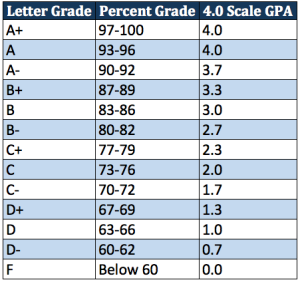
Should you or should you not take the plunge into graduate school? That’s a question that makes its way into the mind of nearly every college student.
For those who answer yes and decide to go to grad school, one of the next questions you will have to answer is how to fund graduate school. This is an entirely different, messy question that can cause you problems.
It caused me problems, that’s for sure. I remember planning on going to law school as an undergrad student and faced the same issue: paying for it. And it didn’t help that the ambitious side of me became obsessed with going to law school at Yale, Harvard, or Stanford—the top three law schools in the country.
Now these law schools cost close to $100,000 a year when you add tuition with living expenses. For example, the Harvard Law School website reports their total cost (tuition, cost of living, etc.) for the 2016-2017 year at $88,880. That’s a lot of money! (The idea for most of these students is to take that bill and then pay it down after they graduate with a $160,000 salary plus bonuses in biglaw.)
And since these law schools are difficult to get in and have a high demand of students wanting to go there, they don’t need to offer merit scholarships. They do offer financial aid money, but that’s about it.
Lucky for me, my problem of paying for grad school went away when I decided to pursue entrepreneurship. (It’s a good thing I figured out what I love sooner rather than later.) But for the students who decide to go to grad school, finding a way to pay for it is a big deal.
It affects how stressed they feel at school, their career decisions after graduation, and how they live their life going forward.
So if you plan on going to grad school, here are the top ways to cut the bill and save (some of) your bank account:
1. Receive a scholarship
Getting a scholarship is the best case scenario, right? You do well on your grad school admissions test, have a high GPA, and you successfully request a letter of recommendation for grad school.
The encouraging news is that most grad schools offer merit scholarships, if you deserve one. The bad news is that this free money to attend their school is extremely competitive.
But, a pro-tip I learned to improve your scholarship chances is to apply as early as possible. So if applications are accepted on October 7, submit yours on October 7—or that week. Don’t wait and submit yours in January. In these three months, the department will fill a bunch of spots and scholarship funds will be drained by the time they check out your application.
My last point on the scholarship topic is don’t limit yourself to only securing a scholarship from your university. There are many non-school related scholarships to win based on a host of requirements, just as there were for undergrad.
For example, mphonline.org shows a list of scholarships for students pursuing the Master’s of Public Health degree. Simply go to Google and type in “public scholarships (insert the degree you seek)” and you’ll find some scholarships you didn’t consider.
2. Get a job and have your company pay
Since many companies offer tuition reimbursement programs to their employees, your master plan could be to work for them a few years and then get them to pay for your graduate degree. The only stipulation is that you’re usually required to work for the company a couple of years so they get their return on their investment in you.
If you’re up for it, all you have to do is convince your manager or company that the graduate school is beneficial to your work and will help you add more value to the organization. (Before you bring this up, be sure the program relates to your current role.) An accountant’s request for computer science coursework will fall on deaf ears. Same goes for an engineer wanting his firm to pay for his master’s degree in education.
But if you do it right, many times companies will listen and offer a partial or full tuition reimbursement. If you’re unsure if this is available, check the company’s HR policies or ask a manager.
You benefit from the free money coming your way. The company benefits because they get their employee—you—better trained and skilled without having to hire someone from the outside.
3. Get work experience and save money before you matriculate
We covered working a full-time job after undergrad and having the company pay for it in step #2. But sometimes your best bet is to work for a few years and save as much money as you can.
For example, say your graduate school is a two-year program that costs $30,000 total and you would make $50,000 at your job. Work for two years and save $15,000 in year one and year two. Then you can afford graduate school without the anxiety of wondering how you’re going to afford it.
As I mention in this post on grad school application tips, gaining work experience will also make you a more competitive candidate in most cases. So not only do you make money, but you improve your chances of getting in and receiving more scholarship money. Talk about a win-win-win!
4. Work for the university
A research or teaching assistant position will certainly help you knock down the cost of tuition. And if you’re fortunate, some individual departments offer graduate students a stipend to cover living expenses in return for their work. Depending on the program and how many hours you work, these assistantships have the potential to pay for an entire year of tuition.
Beyond the monetary gain, you would also develop knowledge in your field by taking on a research or teaching position. This experience will translate well if you intend to pursue working in academia.
The only downside is this work will leave you with less time to study. But if you manage your time well during the week and on the weekends with these time management strategies for college students, then I’m sure it’s manageable. And it’s a myth that more free time equals more productivity. Often it’s the other way around, where if you have more on your plate then you’re forced to focus and be productive.
I assume doctoral candidates have a better success rate in getting this kind of work than master’s candidates because of their experience and higher likelihood of becoming a professor. However, I know many students seeking their master’s degree who land positions working for a professor. You won’t get it if you don’t try!
5. Financial aid
I believe it’s easier to get financial aid for grad school compared to undergrad because now you submit your financial information and income instead of your parent’s info.
And just like undergrad, you need to fill out a FAFSA form to apply for federal financial aid for graduate school. FAFSA forms open January 1st and it’s in your best interest to submit the form as soon as possible—just like you should submit as soon as possible when applying to graduate school and scholarships.
A second type of financial aid you can utilize is state aid. I’m sure you know that in-state tuition is cheaper than out-of-state tuition, so going to a program in your home state can save big bucks. This state financial aid guide provides some more useful information—I like their tip to move to the state of your future grad school, work a few years and establish residency, then attend for in-state tuition.
Your university is a third option to receive financial aid. The inconvenience is you will have to fill out another financial form (similar to FAFSA). But the potential for thousands of dollars in financial aid are certainly worth the time spent applying.
6. Borrow only as much as you need
Although graduate students are able to borrow more money than undergraduate students, you should only borrow as much as you need. It’s easy to focus on the present and forget that you’re going to have to pay all these loans back plus interest in the future.
So think of and protect your future self before you make a bad decision. With that said, sometimes the best move is to borrow money and get federal student loans.
The three types of grad school loans are:
1) Direct Stafford Loans. You can borrow up to $20,500 for each year—subsidized loans based on financial need, and unsubsidized loans are not based on financial need.
2) Direct PLUS Loans. You can borrow up to the cost of attendance minus any other financial assistance received. Receiving this loan is based on your credit history.
3) Perkins Loans. You can borrow up to $8,000 per year based on financial need. The Perkins Loan is not available at every school.
The interest rates are different for different loans. But you will want to know those before borrowing money. And federal student loans offer better interest rates than private loans, so stick with government loans unless there’s no other option.
How To Get Loan Forgiveness
I didn’t include loan forgiveness on the list of ways to pay for graduate school because it requires a certain type of work and doesn’t apply to many students. But if you wanted it to, this option could be #7 on this list.
There are four main ways to get your loans forgiven, but they all require certain qualifications in return. Here are the four:
1) Join the military
Each branch of the military—The Army, Marine Corps, Navy, Air Force, and Coast Guard—provides loan forgiveness.
There’s not a certain set dollar figure that will be forgiven because it varies based on many factors. And the maximum amount forgiven usually depends on the rank of the individual. However, there is a lifetime student loan debt forgiveness value of up to $65,000 for certain qualified applicants. Like the other options on the list, it’s best to contact someone directly involved in your specific program to tell you more information.
2) Get a government, public service, or non-profit job
Employees working in the public service field can take advantage of loan forgiveness under the Public Service Loan Forgiveness (PSLF) Program. This repayment works differently.
After you make 120 monthly payments in a qualifying repayment plan and work full-time, the government forgives the remaining debt. If you already plan on working in public service, then this is gravy. If you are considering it public work, having your loans forgiven can be the reason you officially jump in the public sector.
For those curious, the type of jobs that qualify include federal, state, and local government organization work. Non-profit jobs where the organization is tax-exempt under Section 501(c)(3) of the Internal Revenue Code. Plus some other non-profit jobs in organizations that pay taxes are included, but not all of them.
And working full-time for AmeriCorps or the Peace Corps also qualifies. As you see, there are a lot of options to pay for your loans through government work.
3) Apply for an income-based repayment plan
This loan repayment option is available when your monthly federal student loan payments are high compared to your income. There are four plans—REPAYE Plan, PAYE Plan, IBR Plan, and ICR Plan—that reduce your monthly student loans payment.
In some cases, if you’re income is extremely low, your monthly payment can be reduced to $0. (But you’re not sitting pretty because you have the issue of your income being that low.) Anyway, the main point is this income-based repayment plan could be a quality option for you.
You have to apply and get accepted. However, it’s insightful and a little fun to use a repayment estimator (can find on Google) to get a projection of how this would affect your situation.
And if 25 years go by making these adjusted loan payments, the student’s remaining balance will be 100% forgiven.
4) Teach in a low-income area
The government has a Teacher Loan Forgiveness Program that pays up to $17,500 on your loans if you teach full-time for five years in a low-income area. Only certain locations qualify so you must submit an application and be approved for it.
Unfortunately the PLUS loans outlined above are not eligible for the Teacher Loan Forgiveness Program. But the other two (Stafford and Perkins Loans) are eligible.
The worst move you can make here is to pick a job with the assumption your loans are being forgiven and then find out they’re not. So check with your loans provider to make sure you’re qualified for loan assistance before committing to anything above.
Final Words
Although paying for grad school can be intimidating, it doesn’t have to be. Because when you take advantage of one or a couple of the options above, you’re sure to ease some strain on your wallet and your sanity.
My last advice is to truly reflect and decide if you need grad school to do what you want to do in life. You don’t want to be not happy at work and stuck in a career that forced you under the weight of student loans.
If you need grad school to get where you want to go, then Godspeed to you.
What other options are there to make money and lessen the tuition bill? If you’ve already received your master’s or doctorate degree, how did you fund graduate school? Please feel free to leave a comment or question below.


